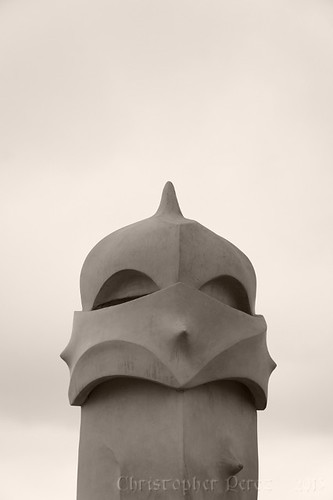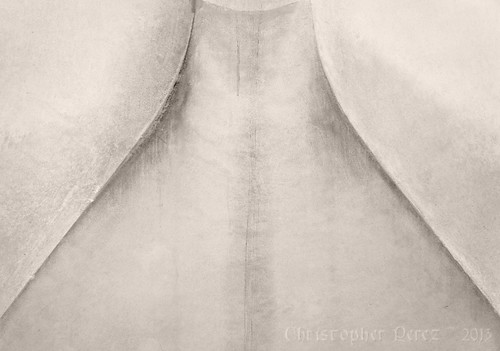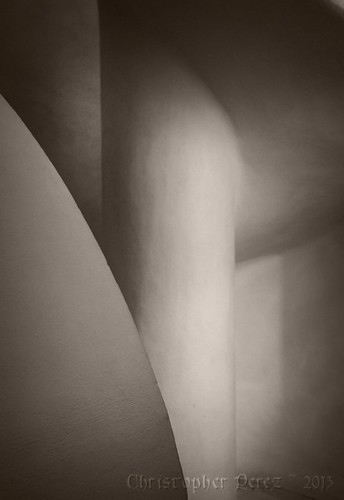In the previous blog post, I wrote about optics and various properties that are commonly discussed. This post is devoted to a discussion of the other end of a camera kit, the image capturing device called a digital sensor.
Much discussion in the camera world is devoted to cameras, their sensors, and who is trouncing whom in the Great Megapixel Race. Without using an inaccessible scientific or engineering language, I will try to shed useful light (oh, yes, keep those puns coming) on the subject.
To start, there are many sensors made by many many manufacturers in a great many sizes. Frankly, I was shocked to see the list of all the companies that make sensors for various photographic applications. Most of us only know the more popular camera brands, such as Canon, Sony, Nikon, Olympus, Panasonic, Sigma, Fuji, Phase One/Mamiya, Hasselblad, Leica, Samsung, and a very long list of cellphone manufacturers. Their sensors may be manufactured by the parent camera company, but sometimes they are not.
The basic function of a photographic digital sensor is rather simple and obvious. That is, a sensor receives light rays directed to it by a lens. Upon receipt of these light rays, a series of very tiny sensors record the intensity and the color of the light. Each very tiny sensor's record is an electronically generated series of numbers. Records from millions of tiny sensors are gathered and presented in a way that we, as viewers, can interpret as an image.
Sensor Size Descriptions -
There are primarily two aspects of "size" that are used in describing photographic sensors.
The first is the physical size, or dimensions, of a sensor. Useful physical photographic sensor sizes span everything from amazingly tiny cell phones through to medium format. That is, some sensors are truly small and others are seemingly quite large. When discussed, you will hear cell-phone, or APS-C, or Full Frame used as a description of the physical dimensions of the sensor.
The second size important in understanding photographic sensors are the number of light recording sights a sensor implements. In common language, this is the number that we refer to as megapixels, or millions of light recording sites. You will see everything from 3.1 megapixel (from some of the earliest commercially available sensors) through to 120 megapixel sensors (as of this date) that sit on a lab bench somewhere in a camera manufacturer's Research and Development facility.
Light Sensitivity -
In the real world, lighting conditions are highly variable. When we experience full mid-day sun, the amount of light reaching us from the sun is quite high. When we experience light from a single candle set in the middle of a large room, the light reaching us is comparatively low. For a camera sensor to be useful in as many lighting situations as possible, we need a camera/lens/sensor system that is flexible enough to enable image capture across a broad range of light conditions.
Lenses provide an aperture that is used to provide one of three ways to control the amount of light hitting a sensor. For instance, the smaller the diameter of the aperture opening, the less light that will hit the sensor. Aperture control is as old as photographic lenses (from the early 1800's).
A second way to control light reaching a sensor is with a shutter. This is particularly useful when trying to "stop action" when shooting sports or when capturing the Milky Way on a particularly clear and beautiful night. Shutters have been used since shortly after sensitive film emulsions required accurate control of exposure (mid to late 1800's).
The third way that is used to help balance shutter speed and aperture against the amount of light hitting a sensor is by varying the sensitivity to light of the sensor itself. This is accomplished in a camera by controlling electronic signals to the sensor.
Borrowing terminology from the original chemical, atomic silver halide film technologies that describe how reactive a sensor is to light, we have the acronym ISO. The lower the ISO, the less sensitive a sensor is to light. Conversely, the higher the ISO, the more sensitive a sensor becomes.
Interesting Properties to be Aware of - part one
There is an interesting relationship between image resolution and senor megapixel count. It is precisely as follows.
As previously described, an image consists of a collection of pixels that describe light intensity and color. It is safe to assume that, in terms of image resolution, that a sensor can accurately capture a sharp edge and reproduce it by moving from a white pixel to a black pixel. Using this, we can look at the number of image pixels and use ideas from the USAF Resolution Test Chart and determine the maximum resolution a sensor can return. The math is quite simple.
Resolution in Line Pairs = [(Number Information Sites) divided by (Physical Dimension of Sensor)] divided by (2 Line Pair per Millimeter)
For example, looking at an 8 megapixel Canon DSLR sensor, the 30D, we see the maximum output file dimensions are 3504 by 2336 image information sites. The physical dimensions of the APS-C sized sensor are 22.5 by 15 millimeters. The answer is calculated as follows.
78 Line Pairs per millimeter = [(3504) / (22.5)] / (2)
Continuing a little...
78 Line Pairs per millimeter = [(5616) / (36)] / (2) - Canon 5D MkII 22 megapixel full frame sensor
116 Line Pairs per millimeter = [(5186) / (22.3)] / (2) - Canon 7D 18 megapixel APS-C sensorMuch discussion in the camera world is devoted to cameras, their sensors, and who is trouncing whom in the Great Megapixel Race. Without using an inaccessible scientific or engineering language, I will try to shed useful light (oh, yes, keep those puns coming) on the subject.
To start, there are many sensors made by many many manufacturers in a great many sizes. Frankly, I was shocked to see the list of all the companies that make sensors for various photographic applications. Most of us only know the more popular camera brands, such as Canon, Sony, Nikon, Olympus, Panasonic, Sigma, Fuji, Phase One/Mamiya, Hasselblad, Leica, Samsung, and a very long list of cellphone manufacturers. Their sensors may be manufactured by the parent camera company, but sometimes they are not.
The basic function of a photographic digital sensor is rather simple and obvious. That is, a sensor receives light rays directed to it by a lens. Upon receipt of these light rays, a series of very tiny sensors record the intensity and the color of the light. Each very tiny sensor's record is an electronically generated series of numbers. Records from millions of tiny sensors are gathered and presented in a way that we, as viewers, can interpret as an image.
Sensor Size Descriptions -
There are primarily two aspects of "size" that are used in describing photographic sensors.
The first is the physical size, or dimensions, of a sensor. Useful physical photographic sensor sizes span everything from amazingly tiny cell phones through to medium format. That is, some sensors are truly small and others are seemingly quite large. When discussed, you will hear cell-phone, or APS-C, or Full Frame used as a description of the physical dimensions of the sensor.
The second size important in understanding photographic sensors are the number of light recording sights a sensor implements. In common language, this is the number that we refer to as megapixels, or millions of light recording sites. You will see everything from 3.1 megapixel (from some of the earliest commercially available sensors) through to 120 megapixel sensors (as of this date) that sit on a lab bench somewhere in a camera manufacturer's Research and Development facility.
Light Sensitivity -
In the real world, lighting conditions are highly variable. When we experience full mid-day sun, the amount of light reaching us from the sun is quite high. When we experience light from a single candle set in the middle of a large room, the light reaching us is comparatively low. For a camera sensor to be useful in as many lighting situations as possible, we need a camera/lens/sensor system that is flexible enough to enable image capture across a broad range of light conditions.
Lenses provide an aperture that is used to provide one of three ways to control the amount of light hitting a sensor. For instance, the smaller the diameter of the aperture opening, the less light that will hit the sensor. Aperture control is as old as photographic lenses (from the early 1800's).
A second way to control light reaching a sensor is with a shutter. This is particularly useful when trying to "stop action" when shooting sports or when capturing the Milky Way on a particularly clear and beautiful night. Shutters have been used since shortly after sensitive film emulsions required accurate control of exposure (mid to late 1800's).
The third way that is used to help balance shutter speed and aperture against the amount of light hitting a sensor is by varying the sensitivity to light of the sensor itself. This is accomplished in a camera by controlling electronic signals to the sensor.
Borrowing terminology from the original chemical, atomic silver halide film technologies that describe how reactive a sensor is to light, we have the acronym ISO. The lower the ISO, the less sensitive a sensor is to light. Conversely, the higher the ISO, the more sensitive a sensor becomes.
Interesting Properties to be Aware of - part one
There is an interesting relationship between image resolution and senor megapixel count. It is precisely as follows.
As previously described, an image consists of a collection of pixels that describe light intensity and color. It is safe to assume that, in terms of image resolution, that a sensor can accurately capture a sharp edge and reproduce it by moving from a white pixel to a black pixel. Using this, we can look at the number of image pixels and use ideas from the USAF Resolution Test Chart and determine the maximum resolution a sensor can return. The math is quite simple.
Resolution in Line Pairs = [(Number Information Sites) divided by (Physical Dimension of Sensor)] divided by (2 Line Pair per Millimeter)
For example, looking at an 8 megapixel Canon DSLR sensor, the 30D, we see the maximum output file dimensions are 3504 by 2336 image information sites. The physical dimensions of the APS-C sized sensor are 22.5 by 15 millimeters. The answer is calculated as follows.
78 Line Pairs per millimeter = [(3504) / (22.5)] / (2)
Continuing a little...
78 Line Pairs per millimeter = [(5616) / (36)] / (2) - Canon 5D MkII 22 megapixel full frame sensor
102 Line Pairs per millimeter = [(7360) / (35.9)] / (2) - Nikon D800 36 megapixel full frame sensor
97 Line Pairs per millimeter - [(10380) / ( 53.7)] / (2) - Phase One IQ180 80 megapixel medium format sensor
This information will be useful when we evaluate lens performance against sensor capabilities, and when we look at people's ideas of image quality and the need to buy "better" lenses.
Interesting Properties to be Aware of - part two
Looking at the number of line pairs per millimeter that the best human eyes can resolve (5 line pair per mm), we can calculate the maximum print size we can make while retaining all of the sensor resolution. The math is, again, quite simple.
Maximum Print Size = [(File Image Information Dimensions) divided by (2 Line Pair per Millimeter)] divided by (Maximum Human Eye Resolution in Line Pair per Millimeter)
Converting for English and Metric centimeters, we see, again using our example cameras, roughly the following.
13 x 9 inches or 35 x 23 centimeters - Canon 30D
22 x 14 inches or 56 x 37 centimeters - Canon 5D MkII
20 x 13 inches or 52 x 34 centimeters - Canon 7D
28 x 19 inches or 73 x 49 centimeters - Nikon D800
41 x 31 inches or 104 x 78 centimeters - Phase One IQ180
This information will be helpful when we evaluate the relative maximum print sizes that each imaging system is capable of, and compare it against the needs of the publishing industry and making fine art images that hang in galleries.
Interesting Properties to be Aware of - part three
The last thing I would like to note here are the effects of changing the light sensitivity of a sensor. Measured in terms of dynamic range, or the range of light from dark to light that a sensor can capture, something interesting happens.
Take a look at any sensor's ISO chart (here is the Canon 5D MkIII example) that tests for dynamic range and what do you see? At low ISO, a sensor is capable of capturing a broader range of light than the same sensor set to a high ISO. The dynamic range delivers 12 EV (or f-stops of light) at ISO 100. The range of light captured drops to 8 EV at ISO 12800. The sensor is loosing sensitivity to a broad range of light as the ISO rises.
Now compare a full frame sensor against the smaller physical dimension APS-C sized sensor (in this case, a Canon 70D). What do we see here? The 70D's sensor captures a similar 12 EV of light at ISO 100. But in this case, the sensor's ability to capture light at high ISO drops quicker than the full frame sensor. The 70D captures less than 7 EV of light at ISO 12800 or 1+ EV less than the full frame sensored Canon 5D MkIII.
This information will be helpful when we evaluate actual sensor development advancements and high ISO performance against marketing hype.
I realize this may be a lot of information to absorb. Each piece is vital to understanding the current generation of cameras, lenses, and their real world capabilities. I will try to tie all these sensor numbers together with optical performance, marketing hype, un-enlightened commentary, and Reality in the next blog entry.
Well, perhaps it will take several blog entries...




